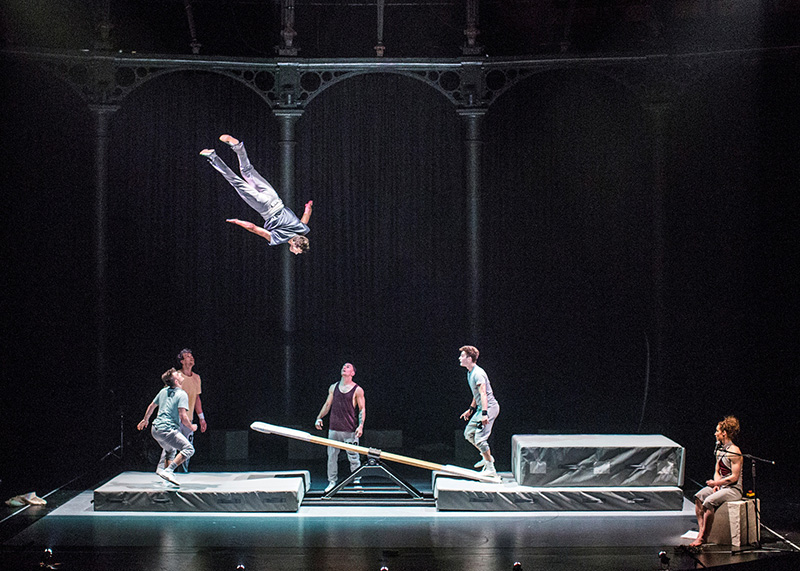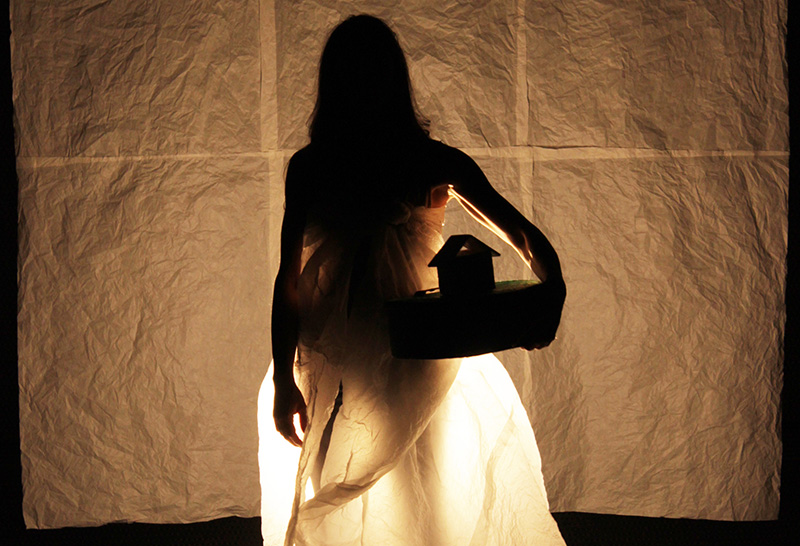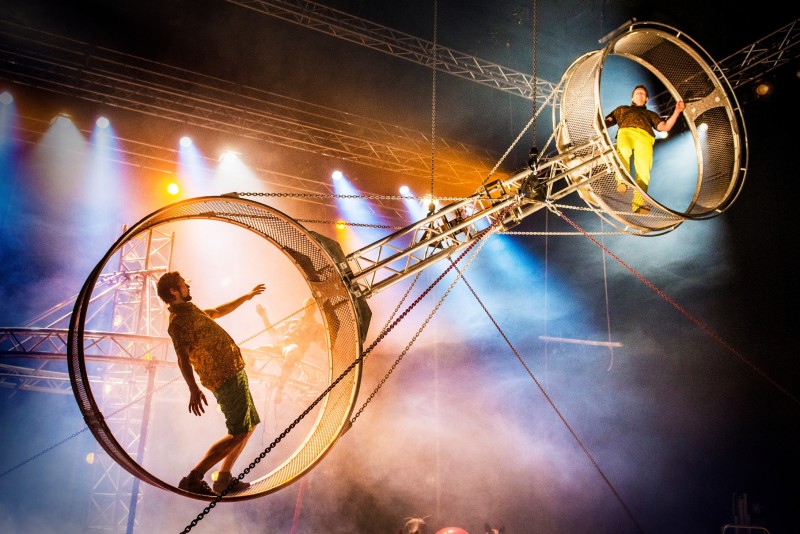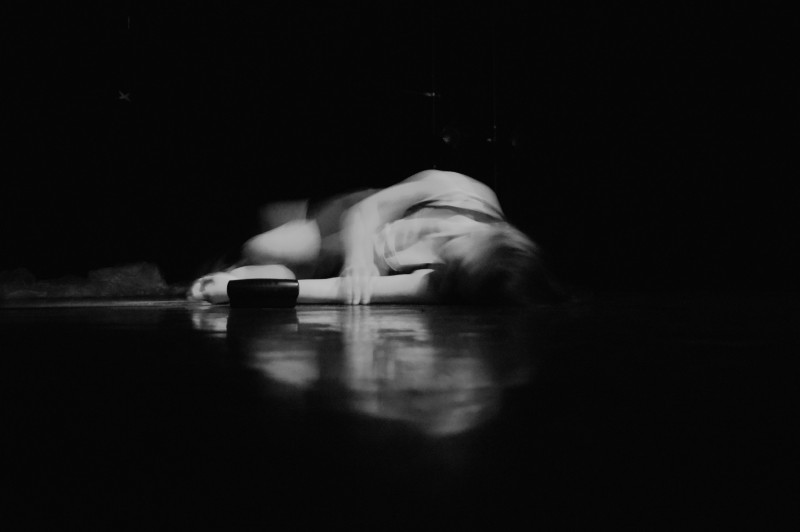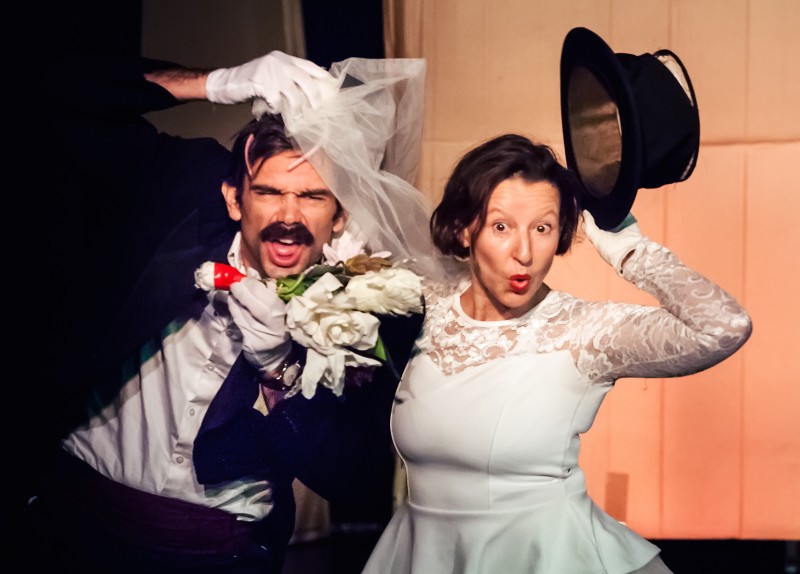 Japanese director Ninagawa’s assertion that he is not interested in what’s new but what works might be a suitable reference point for this delicately witty and, by turns, tender offering by south coast outfit Oh! Productions. The premise is simple: newlyweds Sophie (Sophie Powell) and Olly (Oliver Harrison) have been gifted a flatpack house and we watch as they try to put it together (following the numbered order). Boxes open out to become windows, doors, and furniture – all the while Sophie and Olly gradually losing their control of the situation.
Japanese director Ninagawa’s assertion that he is not interested in what’s new but what works might be a suitable reference point for this delicately witty and, by turns, tender offering by south coast outfit Oh! Productions. The premise is simple: newlyweds Sophie (Sophie Powell) and Olly (Oliver Harrison) have been gifted a flatpack house and we watch as they try to put it together (following the numbered order). Boxes open out to become windows, doors, and furniture – all the while Sophie and Olly gradually losing their control of the situation.
Flat Pack is clearly riffing with the silent films of the 1920s and 1930s – at times it is Buster Keaton, at others Laurel and Hardy – and each scene, or rather each skit, is constructed as a comic puzzle, neatly sequenced and directed by Steven Harper.
Alex Stanford’s live music is an integral part of this puzzle, with Stanford shifting between responding to the action and driving it forward. Entwined within Stanford’s music are small glimpses of classic children’s melodies (Puff the Magic Dragon and Let’s Go Fly a Kite amongst many others). This layering expands the world of the play, bringing in brief but rich associations to the action they accompany.
Puppet versions of Sophie and Olly also enrich the scope of the world, allowing the narrative to increase in scale (as Olly attempts to put the chimney on the roof) and to find fantastical moments (notably when a Mary Poppins-esque wind carries Sophie away over the heads of the audience). Some deft shadow puppetry is vital to bringing the drama to a head, as the poor newlyweds stare down an oncoming locomotive.
Powell is immensely charming and nuanced as Sophie, without becoming winsome or superficial. She articulates the joyful exuberance and flirtatious energy of the start of married life, whilst also giving us glimpses of the frustrations and tensions of adjusting to this new situation. As her new husband Oliver Harrison is a more naive presence (more Chaplin than Keaton, more Laurel than Hardy), but he is still warm and open – and particularly good in marshalling the youngest audience members in the moments of audience participation. When the action stills and the two have to just be together on stage they conjure a rich sense of their mutual attraction and ease in each other’s presence.
The most joyous aspects of Flat Pack are those moments when the light-hearted comic sketches smuggle into themselves moments of poetry. Casually, almost nonchalantly a wedding veil becomes the newlyweds’ curtains – the ritual costume of marriage ceremony transforming into a symbolic border between the outer world and the inner world of the marriage. Or, more boldly, a chimney pot falls from the roof to be made into hat stand – the adaptive, make-do-and-mend spirit of a good marriage.
Like all the best silent films Flat Pack manages to be both funny and moving, prosaic, earthy and poetic.


